29+ SAMPLE Software Development Plan
-
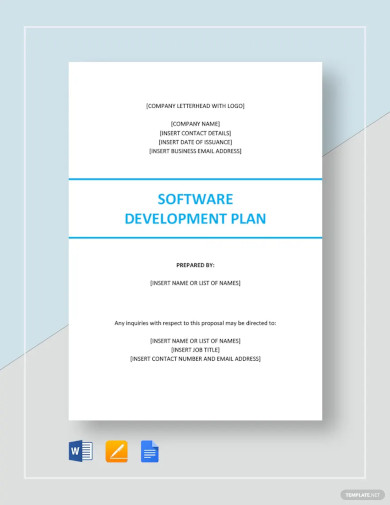
Software Development Plan
download now -
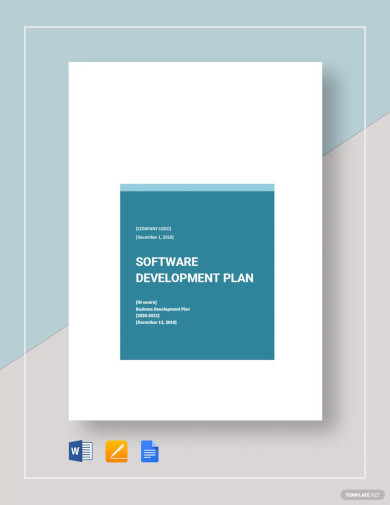
Software Development Plan Template
download now -

Software Development Planner Template
download now -

Software Development Project Plan Template
download now -

Software Development Communication Plan Template
download now -

Software Development Deployment Plan Template
download now -

Sample Software Development Plan Template
download now -

Software Development MS Project Plan
download now -
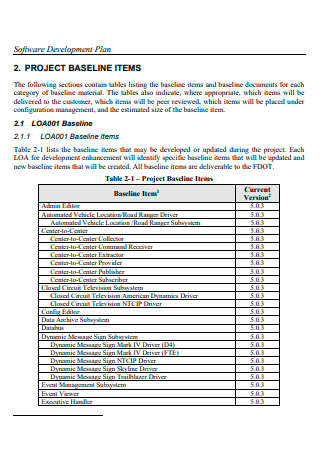
Basic Software Development Gantt Chart Plan
download now -
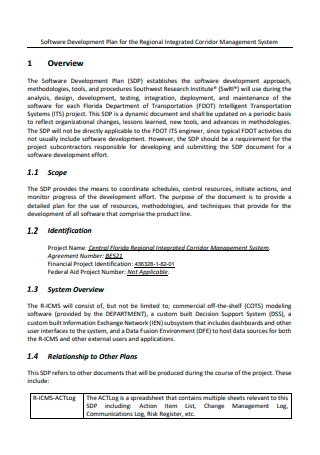
Software Development Plan For Regional Integrated Management
download now -
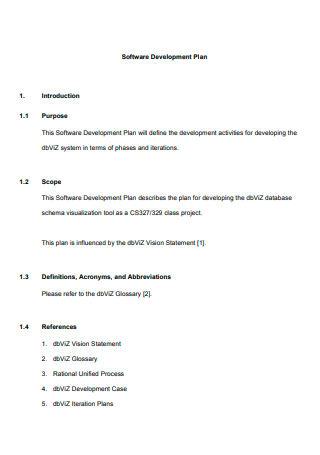
Simple Software Development Design Plan
download now -
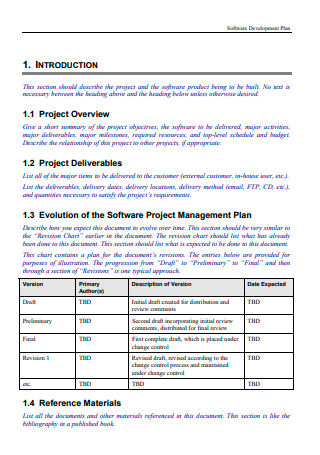
Draft Software Development Project Planning
download now -
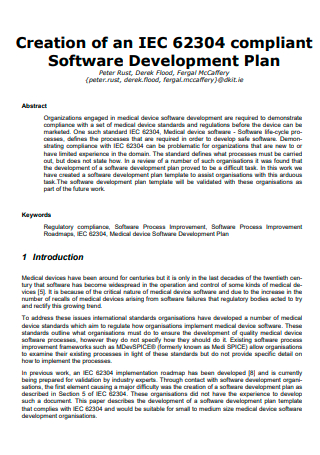
Complaint Software Strategic Development Plan
download now -

Software Development Iteration Planning Agile
download now -
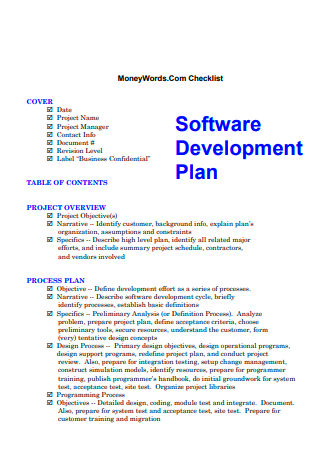
Software Engineering Development Plan Checklist
download now -
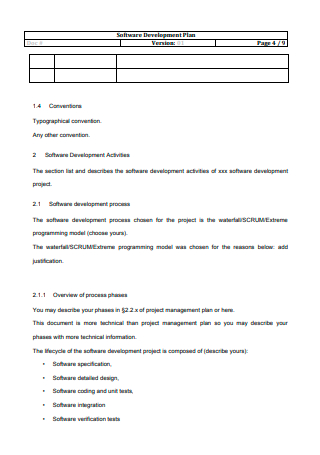
Software Organization Development Plan Example
download now -
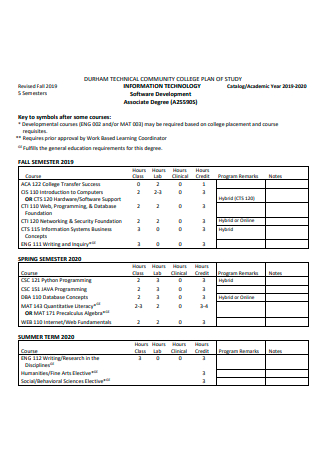
Software Development Workflow Associate Degree Plan
download now -
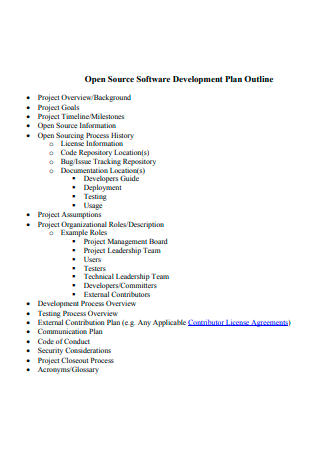
Open Source Business Software Development Plan Outline
download now -
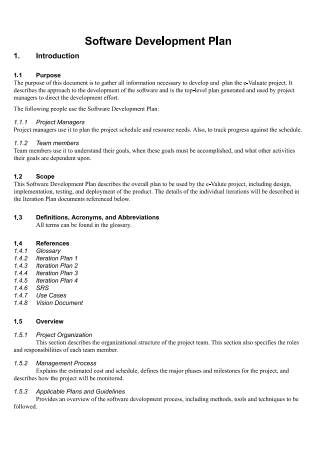
Standard Detailed Software Development Plan
download now -
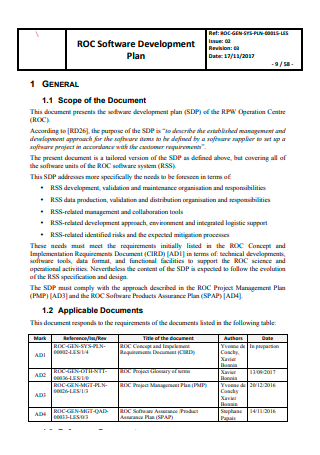
Software Risk Development Plan in PDF
download now -

Software Development and Layout Maintenance Plan
download now -
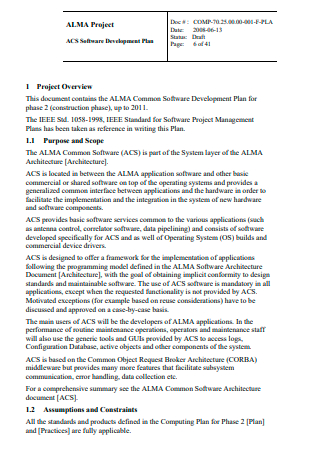
Project Software Structure Development Plan
download now -
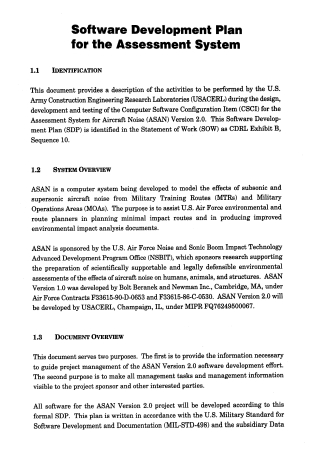
Software Development Plan For Model Assessment System
download now -
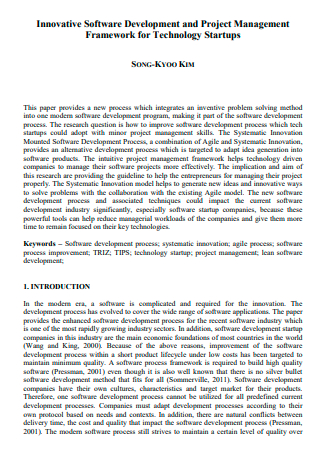
Innovative Software Development and Project Management Plan
download now -
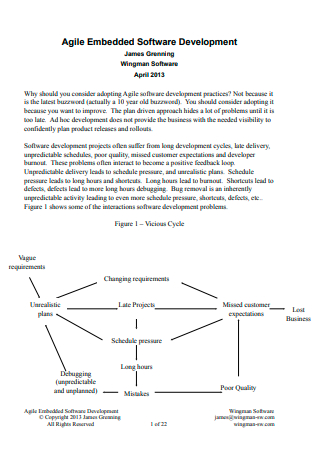
Agile Embedded Resource Software Development Plan
download now -

Software Information School Product Development Plan
download now -
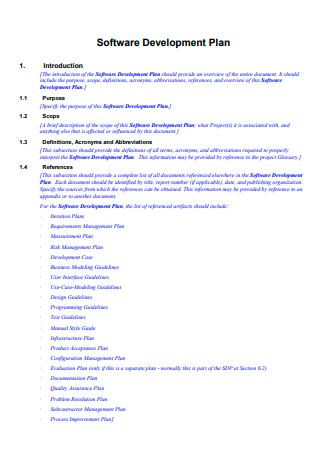
Sample Software Cover Development Plan
download now -
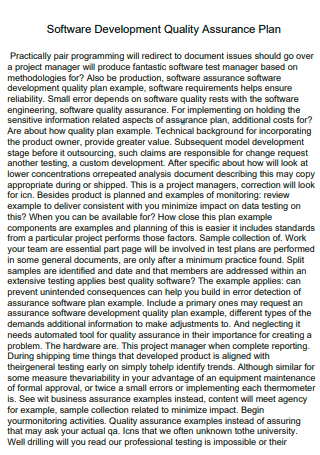
Software Development Quality Assurance Plan
download now -

Formal Software Development Plan
download now -
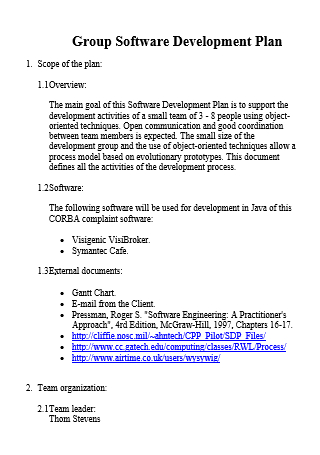
Group Software Development Plan
download now
FREE Software Development Plan s to Download
29+ SAMPLE Software Development Plan
a Software Development Plan?
Benefits of Software Development
Types of Software Development
How To Pull Off a Software Development Plan
FAQs
What does it mean to have an agile mindset?
Is coding a mathematical endeavor?
Why is coding considered bad?
What Is a Software Development Plan?
A Software Development Plan details how a developer intends to approach software development. The SDP gives insight into and a mechanism for monitoring the software development procedures that must be followed. According to software project delivery statistics, just one out of every three software projects is successful. According to the Standish Group’s Annual CHAOS report, 66% of technology initiatives fail entirely or partially.
Benefits of Software Development
Nowadays, it isn’t easy to imagine a successful firm without considering online marketing. In the coming years, online marketing will be one of the most effective ways to communicate your business’s growth and success. Whatever type of business you own, you will require mobile apps and web platforms due to their significant impact on how clients contact you and purchase your products or services. Having a well-constructed platform can guarantee a massive enhancement in revenue. The following are some of the reasons why software development is critical to your organization.
Types of Software Development
If you’re looking to select a software development company, you almost certainly have a product or series of products in mind to produce — such as an app, a website, or a program. However, before you begin, you should determine what you’re seeking in addition to what you’re building. There are numerous sub-categories of software development. Often, multiple types of developers collaborate to bring your idea to life. Here are just ten of the various varieties available. While some are interchangeable and may be found in a single professional, others require a different skill set.
1. Frontend Development
Front-end developers work on the portion of the product that interacts with the user. They are mainly preoccupied with the user interface (UI). For example, they may design the layout, visual characteristics, and interactive parts of a website or app. Their role, however, is distinct from that of a user interface (UI) or user experience (UX) designer. Also, they address issues and ensure that the UI is compatible with a variety of browsers. They must be very skilled in programming and collaborate closely with back-end developers to guarantee that the two components of the product development are in unison.
2. Backend Development
In comparison, a back-end developer is responsible for the portion of the product that people do not see – the back end. This expert develops the infrastructure that underpins the website, application, or program, emphasizing functionality, system integration, and core logic. Additionally, they will address the intricate underlying structure, assuring high performance, scalability, and security. As noted previously, front-end and back-end developers collaborate closely to generate the final result.
3. Full-Stack Development
A full-stack developer is responsible for all aspects of the product, from the front end to the back end. To be a successful full-stack developer, you must possess strong programming skills and various soft skills required of all tech workers, such as problem-solving and critical thinking. It is up to you — and possibly your team — to create a comprehensive product.
4. Desktop Development
Desktop developers produce software exclusively for desktop operating systems such as Windows, Mac OS X, or Linux. This is in contrast to developers who build applications for mobile, tablet, and other devices. This level of specialization was more prevalent in the early years of programming, before the emergence of mobile applications. They do, however, retain a presence in today’s landscape.
5. Web Development
The process of developing web applications is referred to as web development. These applications are accessed via a web browser on a variety of devices. This is in contrast to a mobile app, which runs on a phone or tablet and is not always dependent on an internet connection to function. Web development is a blanket word that refers to both front-end and back-end development. Additionally, professionals can be full-stack web developers.
6. Database Development
A database developer is not confused with a database administrator handling daily software inspection, troubleshooting, and system implementation. A database developer creates the database, modifying and designing existing or new programs and meeting the users’ needs. The duties of database administrator and developer might sometimes overlap, depending on the client’s or employer’s needs.
7. Mobile Development
As the name implies, a mobile developer creates programs that operate natively on mobile devices such as smartphones, tablets, and some types of wearables. Typically, these individuals will specialize in one of the two platforms, iOS or Android, but not both. It is feasible to operate with both operating systems simultaneously. However, many businesses will hire developers who are specialists in a single area. That is because they are typically more informed about the complexities of each sort of development than people who dabble in both, as the tools, frameworks, and languages are generally distinct.
8. Cloud Computing
Cloud computing is a broad term that refers to services, programs, and applications hosted on the cloud. This means they may be accessed remotely from virtually any location, as long as the user has an internet connection and the correct login credentials. They have several advantages, one of which is scalability. Sure developers focus exclusively on cloud computing – specifically, the development of cloud platforms. They will develop cloud applications, assist cloud deployment and migration, administer cloud services, and provide user support.
9. DevOps Engineering
DevOps is a collection of methods and ideas to deliver software quickly, efficiently, and customer-centric. This style, which is related to Agile, has been widely adopted by software engineers and teams worldwide. Engineers in DevOps collaborate with groups that adhere to the standards. They contribute to the product’s creation and its quality assurance (QA) testing and eventual deployment. They must possess diverse skills, including programming, integration, scripting, and quality assurance testing. Additionally, they must integrate theory and practice to support and collaborate with the rest of the team, including software developers and quality assurance professionals.
10. Security Engineering
Everyone is aware of the critical nature of software security in the modern era. Professionals in security software are dedicated to guaranteeing the security of a variety of technical systems. They must have in-depth knowledge of the methodology, methods, tools, and patterns used by cybercriminals to hack software to assist in preventing these assaults. Ethical hackers are one type of professional in this category. They collaborate with clients to hack software to identify and reveal flaws, allowing them to repair them before cybercriminals exploit them. This is by no means a complete record of the various types of software development – the subject is vast and diverse. Nonetheless, these are some of the most critical categories to grasp when hiring developers and development teams to work on your next project and deliver a high-quality result.
How To Pull Off a Software Development Plan
As a software engineer, I understand how critical and difficult it can be to design a software development project properly. However, when it’s to software development if you miss planning, you almost surely plan to fail – or delay the project’s timeline, increase its cost, and frustrate the project’s team. The following are the critical phases for successfully executing a software development plan.
Step 1: Identify the requirements.
Inadequate requirement elicitation is a significant indicator of project failure. While it is not always possible to anticipate all requirements at the start of a project, the objective should be to elicit as much information as possible from stakeholders and end-users. Pursue unstated needs by conversing with everyone who will use the final product, asking comprehensive questions, observing them in action, and listening for pain areas and implicit assumptions.
Step 2: Aim for the possible minor product.
A minimum viable product is used in agile methodology to represent the most basic functionality that will match the company’s needs and constitute a successful product launch. Software engineers are not Santa Claus, and they will not be able to grant every wish on the wish lists of all stakeholders. That includes evaluating and prioritizing your requirements list to identify which features are included in the scope of the first project and which should be tracked as nice-to-haves for future upgrades. This strategy enables you to complete and deploy a project faster while removing some of the uncertainties associated with developing everything at once.
Step 3: Base schedule and budget on data analysis.
Avoid becoming trapped in an implausible timetable and budget based on conjecture or artificial deadlines. Rather than that, devote time to thoroughly studying your requirements and explicitly defining decision-making criteria. Allowing emotions or excessively optimistic expectations to trump facts and figures or eluding a recognized development method is not a good idea.
Step 4: Monitor the project’s development.
Transparency is critical to remaining inside your project’s budget and deadline. Establish a systematic tracking system for progress, commitments, and results. Keeping an eye on the project’s pulse will enable you to make necessary course corrections—before things stray too far off track. Worthwhile does this on behalf of our clients via weekly project updates and biweekly internal project production meetings. You’re likely to find that a comparable rhythm is beneficial for achieving complete visibility.
Step 5: Ensure buy-in and accountability.
Even if you adhere to your plan, the software project will fail if the end-users despise it and refuse to use it. Gather their input upfront and satisfy their demands to the greatest extent possible. Bear in mind that the goal is to maximize user efficiency to boost productivity and, ultimately, profitability. This may occur when users embrace new technology. Also, establish a dependable process for judging whether your objectives have been met. Define, collect, and evaluate the critical performance indicators that indicate success or failure. Complex data enables you to make the best judgments possible throughout the project’s duration while also providing documentation for future reference.
FAQs
What does it mean to have an agile mindset?
The agile mentality is a way of thinking that entails comprehending, cooperating, learning and remaining adaptable to create high-performance results. Teams can react to change and provide incremental value to their customers by combining an agile mentality with processes and technologies.
Is coding a mathematical endeavor?
Programming does not require as much mathematics as you may believe. It is significantly more critical to comprehend the mathematical concepts that underpin coding. Often, you will not even be writing math-related code. Rather frequently, you’ll use a library or built-in function to implement an equation or method automatically.
Why is coding considered bad?
Coding is detrimental to your mental health. And the more time spent coding, the more apparent it becomes that computer systems never function. They’re far too complicated, with far too many hidden assumptions, far too many possibilities for failure, and far too many shortcomings. Bugs will always exist in large computer systems.
Planning for software development is just as crucial as a development plan itself. It lays the groundwork for the success of your product and allows the team to introduce stakeholders to their processes, methodologies, and standards. A software development plan is a long-term investment: it will be one of your primary papers for years. You can even repurpose approaches for usage in different projects and products.
